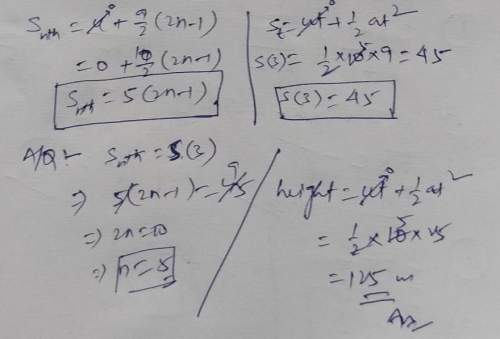
Physics, 04.07.2019 22:30 abelxoconda
Time dilation in special relativity is a direct consequence of the postulate that the speed of light in vacuum is the same in all directions and in all inertial reference frames. 11. if sam on earth takes a spaceship and travels to outer galaxy with speed of 0.9c, sam himself can feel that his body's biological metabolism slows down compared to on earth 12. the first law of thermodynamics is valid both in reversible and irreversible processes. 13. a perfect black-body radiator emits radiation 4 times more, when its body temperature is doubled. 14. ideal gas systems do not have 'heat of transformation' (latent heat) 15. an ideal gas system initially at 20°c is doing work to the outside environment by expanding 0.1 m3. the work done by the system following an isothermal process is always larger than that followinga constant pressure process. 16. for a diatomic ideal gas system following the maxwell's speed distribution law, the root-mean square speed is the highest, followed by the average speed and then by the most probable speed. 17. the second law of thermodynamics suggests that the entropy of an ideal gas system is always increasing during an irreversible process. 18. the change in entropy of a thermodynamic system can be calculated even for an irreversible process, such as a free expansion.

Answers: 1


Another question on Physics

Physics, 21.06.2019 22:00
There is a theory that indicates that dinosaurs became extinct when about 65 million years ago, a large asteroid hit the earth surface. dust caused by this collision blocked the sunlight reaching the earth's surface and many forms of life became extinct due to the cold. fearing this threat, how large the radius of an asteroid should you be looking for if the dangerous asteroid size is approximately the same as the one that killed the dinosaurs? available data suggests that about 18% of that asteroid's mass ended up as a dust spread evenly over earth after eventually settling out of the upper atmosphere. about 0.0180 g/cm^2 of dust, which is chemically different than the earth's rock, covered the earth's surface. typical asteroids have a density of about 1.9 g/cm^3. now that we know the size of the asteroid, how much energy was released during impact, assuming all of it was just the kinetic energy of the asteroid right before the impact?
Answers: 1

Physics, 22.06.2019 23:00
Awelder using a tank of volume 7.50×10^-2 m^3 fills it with oxygen (with a molar mass of 32.0 g/mol ) at a gauge pressure of 3.30×10^5 pa and temperature of 37.1 ∘c. the tank has a small leak, and in time some of the oxygen leaks out. on a day when the temperature is 23.1 ∘c, the gauge pressure of the oxygen in the tank is 2.00×10^5 pa . a) find the initial mass of oxygen. b) find the mass of oxygen that has leaked out.
Answers: 3

Physics, 23.06.2019 04:50
Which is not true of alpha radiation? o a. it increases the number of protons. o b. it has a positive charge. o c. it causes transmutation. o d. it is heaviest of the three types
Answers: 1

Physics, 23.06.2019 11:40
As the ball rolls down the ramp, there are changes in kinetic and potential energy. how much kinetic energy does the ball have when it reaches point b? a) 0j b) 25j c) 50j d) 100
Answers: 3
You know the right answer?
Time dilation in special relativity is a direct consequence of the postulate that the speed of light...
Questions





Biology, 23.08.2019 02:30








Computers and Technology, 23.08.2019 02:30


Mathematics, 23.08.2019 02:30

Mathematics, 23.08.2019 02:30

Geography, 23.08.2019 02:30

Mathematics, 23.08.2019 02:30

Mathematics, 23.08.2019 02:30

Mathematics, 23.08.2019 02:30




